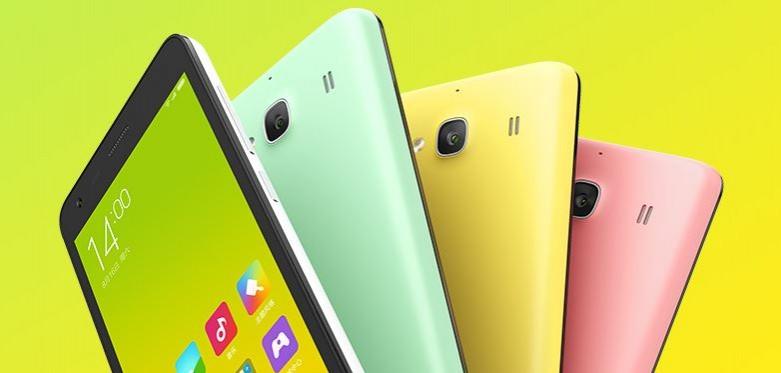
Popular Chinese smartphone maker, Xiaomi, is reportedly launching a new product in India on Thursday (12 March).
Since last week, Xiaomi had began a promotional campaign with a word-puzzle contest on Facebook with winners standing a chance of getting priority passes for the new product's flash sale in India later in the month.
In the word puzzle, many deciphered more than six key words- Snapdragon, wideangle, dualsim, expandable, microSD and quickcharge – the same very features seen in the recently unveiled Redmi 2 in China.
However, the company, probably to throw people off track, placed some unrelated words- Kepler and Nvidia, leading many to believe Xiaomi might also announce another device – Mi Pad which houses the Nvidia based Kepler series SoC (System on Chip).
Early on Wednesday (11 March), company's India operation head, Manu Kumar Jain (via Twitter) posted an invite for a product launch in New Delhi with a half-image of a smartphone, all but confirming that Xiaomi is indeed launching Redmi 2 on 12 March.
That said, there is also a chance that Xiaomi might surprise the Indian fans by announcing the feature-rich Mi Pad. After all, these are just speculations; we just need to wait for a few more hours to really know what Xiaomi has in store for us.
Xiaomi Redmi 2 is a moderate upgrade over its predecessor, but if priced aggressively under ₹7,000, it is certain to stir up another storm in the budget smartphone category just like Redmi 1S did in 2014.
To provide some perspective on the new Xiaomi device, we have listed some of its key aspects based on which users can make an informed decision before buying the Redmi 2.
Here are 5 key features of Xiaomi Redmi 2:
64-bit class Qualcomm SoC (System on Chip):
Xiaomi Redmi 2 houses a next generation 64-bit class Snapdragon 410 series quad-core processor manufactured by the industry leader Qualcomm.
It will be backed by 1GB/2GB RAM and 8GB inbuilt memory.
One of the advantages of having a 64-bit processor is that the phone's performance and RAM management will be more optimized, so that the resources are efficiently used among the apps. Users are less likely to face a lag during multi-tasking.
And also new Android applications starting this year will be rolled-out with 64-bit architecture compliant codes, making YU Yureka future-proof.
4G-LTE connectivity:
Xiaomi Redmi 2 supports 4G-LTE (FDD) enabling high-speed internet. He/she can download files with 150 mbps speed and upload data with 50mbps speed.
HD Display:
If the company aggressively prices Redmi 2 under ₹7,000, then it will be only smartphone in the market to feature 4.7-inch HD (1280x720p) IPS display with pixel density of 312 ppi (pixels per inch).
[Note: Smartphone companies who market phones with full HD (1920x1080p), QHD (2560x1440p), etc are simply marketing gimmicks. Human eye cannot notice difference in pixel density between devices' screens beyond HD resolution or 326 ppi ]
Android Mobile OS:
The new Redmi 2 runs on the tweaked Android OS (4.4.4 KitKat) with MIUI, which is very refreshing. This feature-rich interface is more like a hybrid between Android and iOS which is simple and yet visually appealing.
Xiaomi has gained a lot of reputation for being one of the very few OEM (Original Equipment Manufacturers) partners of Google, who is quick with releasing software updates. That's not all. They also listen to fans on official forums and release regular software patch soon after a bug is reported.
Camera:
Redmi 2 boasts an 8.0-megapixel camera ( 5-element lens) with , f/2.2 aperture, 28 mm wide-angle lens, real-time HDR, full HD (1080p) video recording ability on the rear-side and a good 2.0-megapixel snapper on the front enough to capture decent selfies.
Price:
In China, Redmi 2 costs ¥699 (around 7,000), which is very low for such as feature rich device. 3G based Moto (2 Gen), which is slated go on sale in India on 12 March costs ₹6,999. It will also poised to give stiff challenge to its Chinese peer, Lenovo which sell 4G enabled A6000 in India for ₹6,999 and also the popular domestic brands like Micromax, Karbonn Mobiles and Lava.
Key specifications of Xiaomi Redmi 2 and Mi Pad:
| Models | Xiaomi Redmi 2 | Xiaomi Mi Pad |
| Display |
|
|
| OS | Android 4.4.4 KitKat with MIUI v6.0 | Android 4.4 KitKat with MIUI |
| Processor | 64-bit class Qualcomm Snapdragon 410 series quad-core CPU(chipset type:MSM8916) | 2.2GHz Nvidia Tegra K1 quad-core Cortex A15 CPU |
| GPU | Adreno 306 | ULP GeForce Kepler (192 cores) |
| RAM | 1GB LPDDR3/ 2GB | 2GB LPDDR3 |
| Storage capacity | 8GB/16GB, expandable up to 32GB | 16/64GB, expandable up to 128GB |
| Camera |
|
|
| Battery | 2200 mAh | 6700 mAh |
| Network | 2G, 3G & 4G (TDD-LTE (B38 / B39 / B40 / B41: 2555-2655MHz), FDD-LTE (B3 / B7)) | No SIM slot |
| Add-ons | Dual-SIM slots, Bluetooth v4.0, Wi-Fi (802.11 b/g/n), GPS+ GLONASS, A-GPS, | Bluetooth v4.0, Wi-Fi (802.11 a / b / g / n / ac with dual ac 2X2 dual antenna), USB 2.0, microSD card slot, |
| Dimensions | 134.0 x 67.2 x 9.4 mm | 202 x 135.4 x 8.5 mm |
| Weight | N/A | 360 g |
| Price [In China] | ¥699 (around ₹6,997) | 16GB: ¥1299 (around ₹13,000)64GB: ¥1699(around ₹17,000) |

















